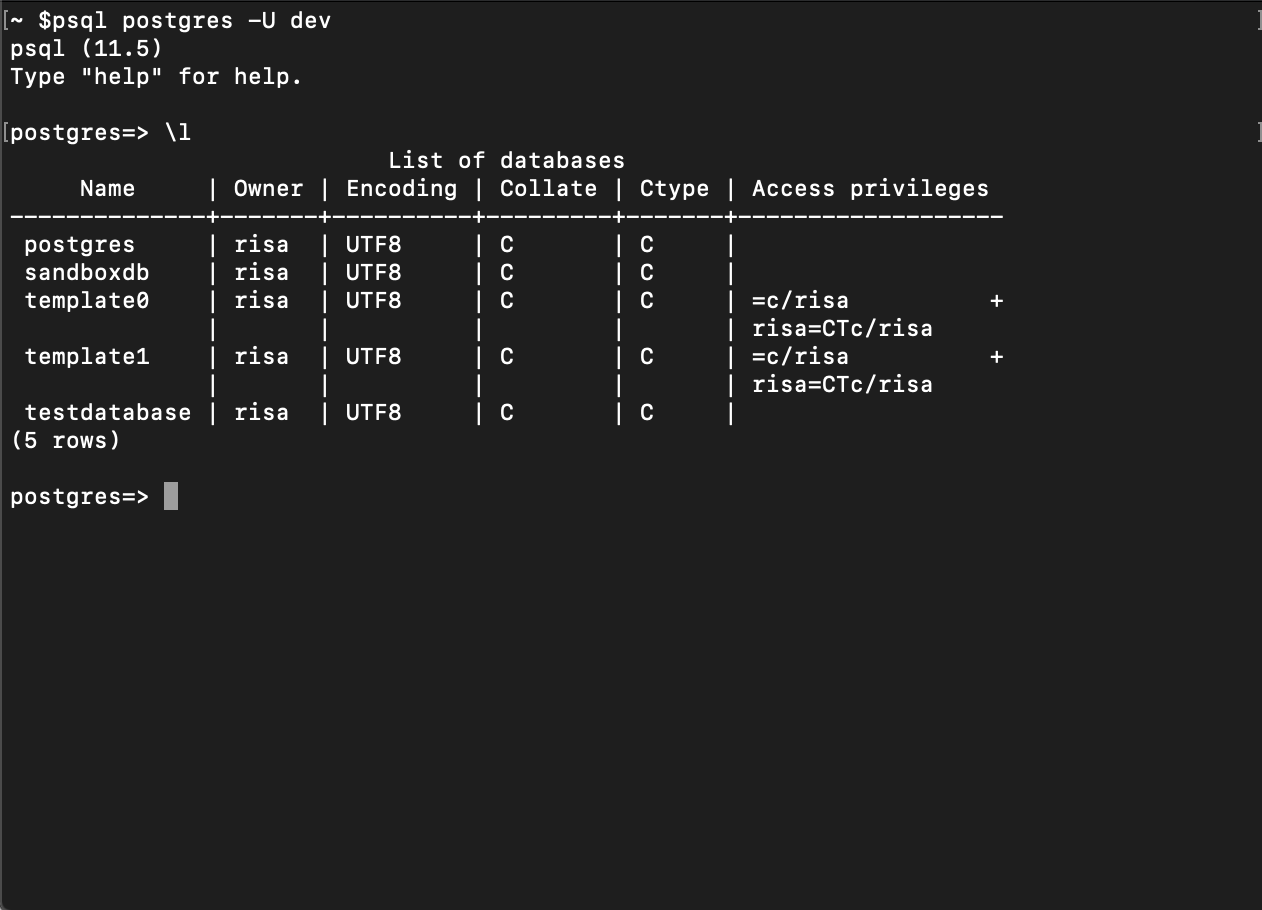
- Postgres show user update#
- Postgres show user driver#
- Postgres show user password#
- Postgres show user license#
We can see the owner of objects in the database using the psql interactive terminal or querying the pg_catalog tables that correspond to the object type. It can be altered after the fact, but initially, the creator is the owner. In PostgreSQL, the role that creates an object (table, view, function, etc.) becomes the owner. Understanding the implications of this is essential to the management of your database schema, and access to the objects it contains, over time. Although there are many privileges that can be assigned in Postgres, object ownership comes with a specific level of privilege that cannot be transferred to other roles. Understanding how roles and privileges work in Postgres is key to understanding the next, and often more confusing part of security, object ownership.
Postgres show user update#
Adminer had some security bugs in the past so update whenever Adminer tells you there is a new version available (ask your administrator if you could not update yourself).

You can also delete Adminer if not needed anymore, it is just one file which is easy to upload in the future. to require an OTP) or by customizing the login method. Still, consider making Adminer inaccessible to public by whitelisting IP addresses allowed to connect to it, password-protecting the access in your web server, enabling security plugins (e.g.
Postgres show user password#
Adminer does not allow connecting to databases without a password and it rate-limits the connection attempts to protect against brute-force attacks. Security is #1 priority in development of Adminer.
Postgres show user license#
Free for commercial and non-commercial use ( Apache License or GPL 2).Supports PHP 5, 7 and 8 with enabled sessions.
Postgres show user driver#
Works with MySQL, MariaDB, PostgreSQL, SQLite, MS SQL, Oracle, Elasticsearch, MongoDB, SimpleDB ( plugin), Firebird ( plugin), ClickHouse ( plugin) - Improve your driver.



 0 kommentar(er)
0 kommentar(er)
